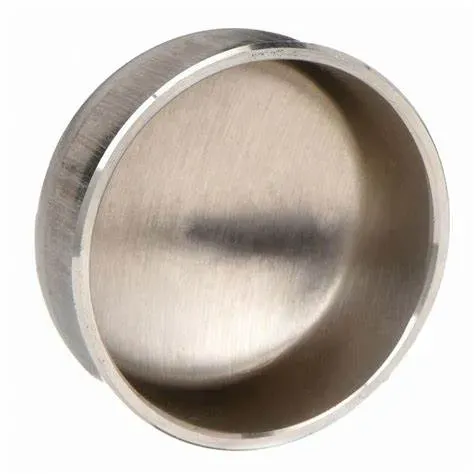-
Cangzhou Yulong Steel Co., Ltd.
-
Phone:
+86 13303177267 -
Email:
admin@ylsteelfittings.com
- English
- Arabic
- Italian
- Spanish
- Portuguese
- German
- kazakh
- Persian
- Greek
- French
- Russian
- Polish
- Thai
- Indonesian
- Vietnamese
- Zulu
- Korean
- Uzbek
- Hindi
- Serbian
- Malay
- Ukrainian
- Gujarati
- Haitian Creole
- hausa
- hawaiian
- Hebrew
- Miao
- Hungarian
- Icelandic
- igbo
- irish
- Japanese
- Javanese
- Kannada
- Khmer
- Rwandese
- Afrikaans
- Albanian
- Amharic
- Armenian
- Azerbaijani
- Basque
- Belarusian
- Bengali
- Bosnian
- Bulgarian
- Catalan
- Cebuano
- China
- China (Taiwan)
- Corsican
- Croatian
- Czech
- Danish
- Esperanto
- Estonian
- Finnish
- Frisian
- Galician
- Georgian
- Kurdish
- Kyrgyz
- Lao
- Latin
- Latvian
- Lithuanian
- Luxembourgish
- Macedonian
- Malgashi
- Malayalam
- Maltese
- Maori
- Marathi
- Mongolian
- Myanmar
- Nepali
- Norwegian
- Norwegian
- Occitan
- Pashto
- Dutch
- Punjabi
- Romanian
- Samoan
- Scottish Gaelic
- Sesotho
- Shona
- Sindhi
- Sinhala
- Slovak
- Slovenian
- Somali
- Sundanese
- Swahili
- Swedish
- Tagalog
- Tajik
- Tamil
- Tatar
- Telugu
- Turkish
- Turkmen
- Urdu
- Uighur
- Welsh
- Bantu
- Yiddish
- Yoruba

Aug . 14, 2024 05:32 Back to list
Exploring the Benefits of Rubber Throat Bushes in Slurry Pump Applications for Enhanced Performance
The Importance of Rubber Throat Bushes in Slurry Pumps
Slurry pumps are essential components in various industries, particularly in mining, construction, and wastewater management, where they handle the challenging task of transporting abrasive and viscous materials. One critical part of these pumps is the rubber throat bush, which plays a pivotal role in ensuring optimal performance and longevity of the pumping system.
Understanding Slurry Pumps
Before delving into the significance of rubber throat bushes, it’s essential to understand the operation of slurry pumps. These pumps are designed to move slurries — mixtures of solid particles and liquid — which can be highly abrasive and can cause wear and tear on standard pump components. To combat this, slurry pumps are specifically engineered with durable materials and design features that can withstand harsh operating environments.
Role of the Rubber Throat Bush
The rubber throat bush is located in the throat of the pump, where the slurry enters the pump casing. Its primary function is to create a seal between the pump casing and the impeller. This sealing capability is crucial for maintaining pressure and preventing the leakage of slurry, which could lead to contamination and reduced efficiency. The rubber material used in the throat bush offers several advantages
1. Abrasion Resistance Rubber is inherently resistant to abrasives, which makes it suitable for handling slurries containing solid particles. The rubber throat bush can endure the constant wear caused by these particles, thereby extending the life of the pump.
2. Flexibility The flexibility of rubber allows the throat bush to absorb vibrations and shock loads, reducing the risk of damage to the pump components. This flexibility can also facilitate easier installation and removal for maintenance purposes.
slurry pump rubber throat bush

3. Corrosion Resistance Many slurries can be corrosive due to the nature of the materials being transported. Rubber materials are often treated to resist chemical degradation, ensuring that the throat bush maintains its integrity over time.
4. Cost-Effectiveness Replacing parts in a slurry pump can be a costly endeavor, not just due to the price of the components themselves but also due to potential downtime. Rubber throat bushes generally offer a more cost-effective solution due to their durability and longevity, resulting in less frequent replacements.
Maintenance and Replacement Considerations
While rubber throat bushes are designed for longevity, regular maintenance is still necessary to ensure the slurry pump operates at peak efficiency. Routine inspections can help identify wear and tear, allowing for preemptive measures before failure occurs. Additionally, operators should keep an eye on the condition of the rubber material, looking for signs of cracking or excessive wear.
When replacement is needed, it’s crucial to use high-quality rubber throat bushes that meet the specific requirements of the slurry pump. Compatibility with the type of slurry being transferred and the operating conditions of the pump must be considered to ensure optimal performance.
Conclusion
In summary, rubber throat bushes are integral components in slurry pumps that contribute to their effectiveness and durability in demanding industrial applications. Their ability to resist abrasion, flexibility, and corrosion resistance makes them invaluable for maintaining the integrity of the pumping system. By investing in high-quality throat bushes and adhering to a regular maintenance schedule, industries can enhance the reliability and efficiency of their slurry pumps, ultimately leading to better operational performance and reduced costs.
As we continue to advance in technology and material science, the development of even more resilient and effective rubber throat bushes is likely to play a crucial role in the evolution of slurry pump designs, further improving the capabilities of these essential industrial tools.
Latest news
-
ANSI 150P SS304 SO FLANGE
NewsFeb.14,2025
-
ASTM A333GR6 STEEL PIPE
NewsJan.20,2025
-
ANSI B16.5 WELDING NECK FLANGE
NewsJan.15,2026
-
ANSI B16.5 SLIP-ON FLANGE
NewsApr.19,2024
-
SABS 1123 FLANGE
NewsJan.15,2025
-
DIN86044 PLATE FLANGE
NewsApr.19,2024
-
DIN2527 BLIND FLANGE
NewsApr.12,2024
-
JIS B2311 Butt-Welding Fittings LR/SR 45°/90° /180°Seamless/Weld
NewsApr.23,2024











